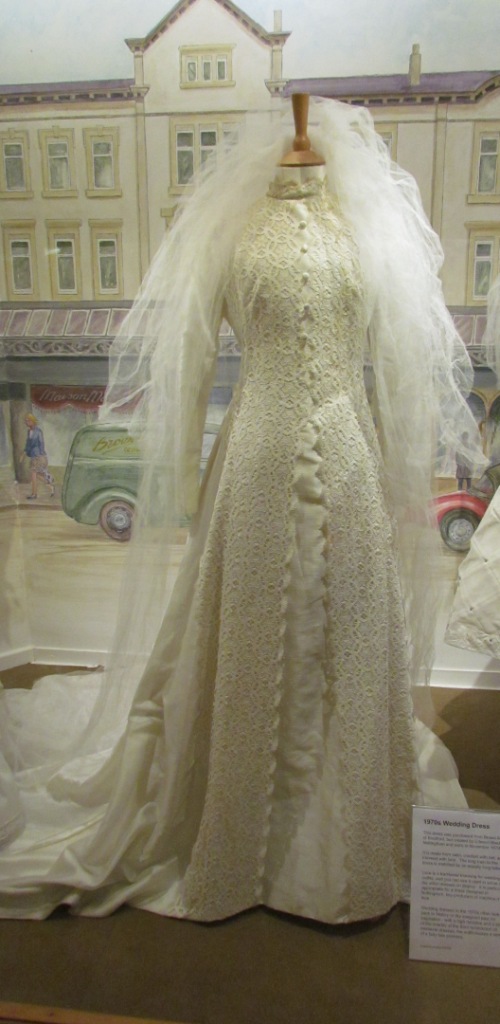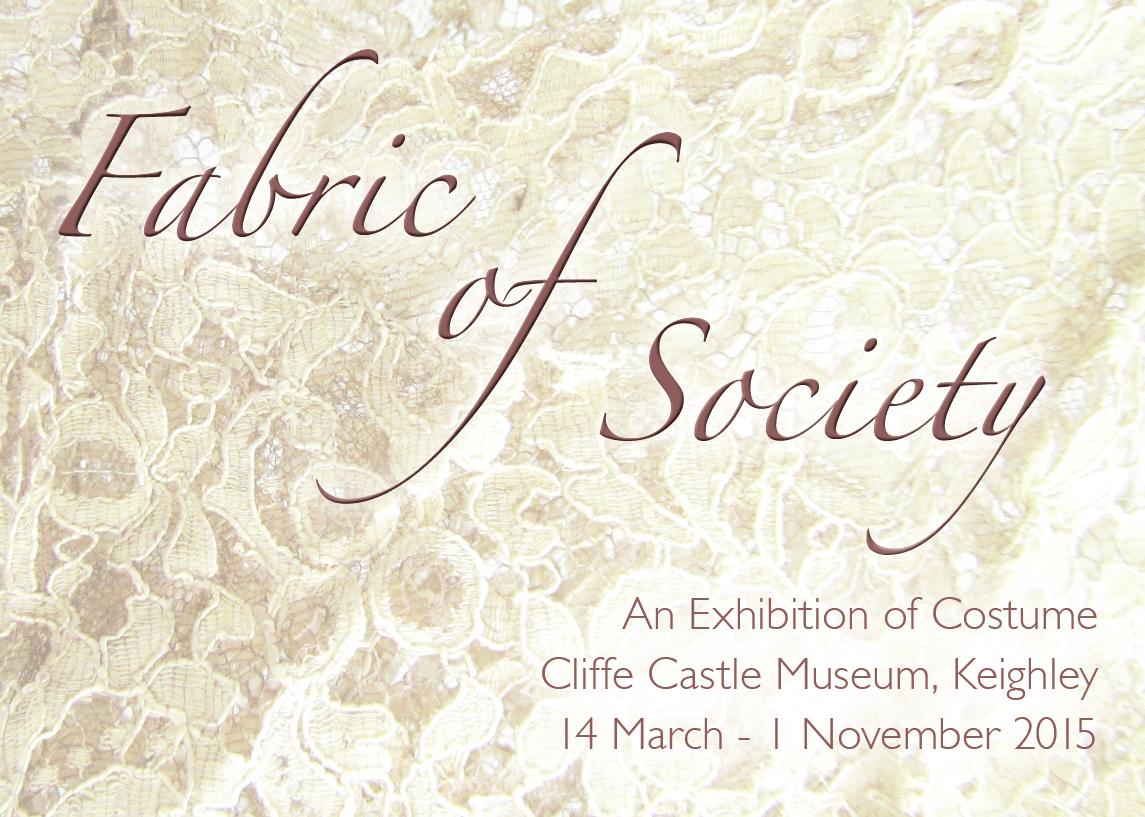Although I coordinate the blog posts here for Bradford Museums and Galleries, my ‘day job’ is as the Social History Curator, working with the social history collections and curating exhibitions for the service that draw from it.
Most recently, I curated a show at Cliffe Castle called ‘Fabric of Society’, which looks at some of the spectacular wedding and party dresses that were a result of Bradford and district’s enormous textile wealth as well as a selection of historical wedding gowns worn in the district from the 1860s to the 1980s. If you’ve not caught it yet, you’ve got time – it’s on display until the 1st November this year.
We’re now in what I refer to as ‘wedding season’ – the summer is a popular time for weddings to take place – indeed I’m off to a family wedding at the end of June, so it’s safe to say weddings, dresses and traditions have been rather to the front of my mind over the past year!
In this blog, I want to explain how the tradition of the ‘white wedding dress’ started – and how its not always the case, using a selection of the dresses currently on display in the exhibition. The ‘White wedding dress’ is now considered traditional, but it is in fact a fairly modern convention, and one that only really started to become truly popular after the marriage of Queen Victoria in 1840.
Prior to the Victorians, the choice of dress was not limited to one particular colour although silver, white, and a combination of the two were popular among the aristocracy . Light colours and fabrics were common for day and evening wear, so the choice of such colours for a wedding dress would be reflective of fashion, with dresses were re-worn and remade after the wedding took place.
The choice of light colours and expensive fabrics would therefore provide a visible symbol of wealth to the guests at the wedding. For instance, Princess Charlotte, when marrying George III in 1761, wore silver tissue (a type of fabric with a raised weave), embroidered with silver, worn with a purple mantle (cloak) and purple cap trimmed with diamonds – each choice reflecting the royal nature of the bride and the wedding- purple was another colour associated with royalty and the rich, due to the cost in production was associated with Royalty..
In 1840, Queen Victoria married her cousin, Prince Albert of Saxe-Coburg and Gotha. Although she was already Queen, she was clear that she was making her vows as a wife, not a monarch and chose to a dress to reflect that, rather than marry in her Robes of State. She did however, choose silk from Spitalfields and Honiton lace – to be used to create her dress. Both were made in Britain and enjoyed a boost in sales as a result. With the Queen marrying in white, it became desirable for her those of her subjects who could afford to follow suit where possible, dressing in creams, ivories and whites
Mary Holden, the daughter of Textile Millionaire Sir Isaac Holden, was married in 1860 to Henry Illingworth (son of another textile family), wearing a watered white silk. The development in the early 1860s of cage crinolines allowed for dress skirts to be come very wide. This is quite a simple dress, trimmed with white braid, and with matching detachable undersleeves and boots. It reflects fashion in daytime dresses, as during this period marriages had to take place in the morning. Here we’ve displayed it a bouquet of artificial orange blossom and myrtle leaves (traditional flowers for weddings), which were donated to us with the dress. We’re not sure that it was the bouquet she used – its more likely to have been a replica made to display on top of the wedding cake, but it is rather effective!
Mary Holden’s Wedding Dress 1860
It’s interesting to contrast this dress, worn by the daughter of a wealthy Mill Owner, with that worn by a worker in a textile mill.

Esther Marsden was a worsted stuff weaver from Bowling, Bradford when she got married in 1877. Like many working class brides, rather than a light coloured dress, she chose a more practical stripped taffeta for her wedding. This could then be used for ‘best’ . The skirt on this dress is much slimmer than Mary’s – partly reflecting the changes in fashion since the 1860s – but also reflecting the more practical requirements of the wearer. The shawl has a printed design, rather than a woven one, making it a less expensive, though no less treasured purchase.
Travelling forward a few decades, dresses after the First World War became more inspired by eveningwear than day wear, whilst still being suitable for wearing in the daytimes hours required for the Wedding to take place. The dress below is from the 1920s.

The 1920s saw a move away from constricting corsets with long skirts to a simpler shape and shorter hemlines often referred to as the flapper style. Some dresses were short enough to see the wearer’s knees, particularly when worn to dance; most dresses were nearer calf length, like this one. Daytime dresses would be longer than those worn in the evening, so for a wedding dress, the longer length would be appropriate.
Brides during and after World War II, operated within the constraint of clothes rationing, which meant brides had to either uses alternative fabrics, such as parachute silks or often would wear the practical option of a suit. If fabric was able to be obtained, styles often reflected 1930s Hollywood – such as the one below.

By the end of the 20th century, however, Wedding dresses move away from reflecting the current fashions and look back to history and fairytales for inspiration.

The 1970s dress is trying to evoke the simple lines of medieval dresses, with the lace trim echoing the split skirts.
Lady Diana Spencer’s large skirt, puffed sleeves and ruffled neckline was echoed in the choice of dresses for many brides in the early 1980s, and it was clearly an influence behind the choice of the most recent of the wedding dresses we have in the collection.



3 Responses
So pleased to find my cousins wife Mary Holdens wedding dress here.
Thank you
We’re glad you enjoyed the blog post, Sharon – it’s a lovely dress.
Keep up the remarkable work !! Lovin’ it!